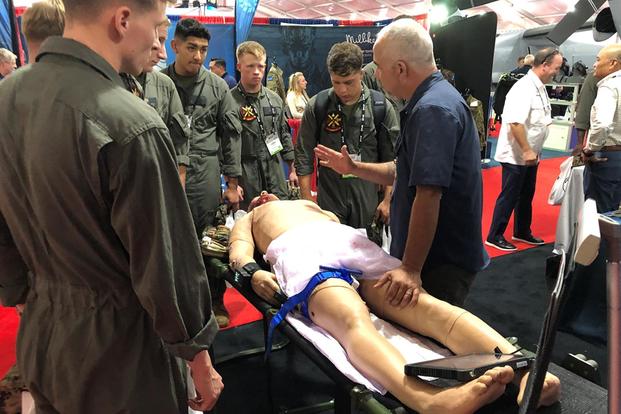QUANTICO, Virginia -- Navy corpsmen will need a whole lot more than Motrin to treat Marines operating in small teams far from ships or aircraft that can move them off the battlefield.
Operating in dispersed environments is turning battlefield medicine on its head, Col. Jesse Kemp, director of the Marine Corps' logistics integration division, said at the Modern Day Marine 2019 expo here this week.
Experts have for years warned that the 60-minute window, known as the "golden hour," it took to move many casualties from the battlefield in Iraq or Afghanistan to expeditionary medical centers is over. That kind of help, Kemp said, isn't always going to be available in future operating environments.
"We're going to hold patients longer, so the technology required to do that effectively needs to be pushed forward," he said. Tomorrow's corpsmen, he added, "need to be the surgeons of today."
Related: Read all about Modern Day Marine 2019
That has officials with North American Rescue, which creates the lifelike TOMManikin, or Tactical Operation Medical Manikin, pushing new tools for training military medics.
Corpsmen and others have used the lifelike TOMManikin that bleeds, breathes and talks for years as they prepared to treat injured Marines. Now, the mannequin's creators are working on a new product that will challenge sailors to treat Marines who've been injured on the battlefield for a longer time period.
"I'm trained to do in the first 10 minutes putting tourniquets on chest seals, everything else," Adam Reading, a retired Air Force chief master sergeant with North American Rescue, said at the expo. "But what if I'm going to be here for a day and a half? What can I do?"
Corpsmen need to learn how to use more advanced medical tools to stabilize their patients, he said. They'll likely be tested with managing their patients and keeping them alive for a lot longer than they're used to.
"It's going to be longer for care to get there," Reading said.
His hope: that corpsmen and injured troops can someday push a button to call in a drone with a medical kit that can reach them in minutes. Some fire departments are testing ways to deploy automated defibrillator to someone who calls 911.
"Why can't we do that for our soldiers?" he asked. "I'm excited to see where that goes."
-- Gina Harkins can be reached at gina.harkins@military.com. Follow her on Twitter @ginaaharkins.
Read more: Marines Near Deal to Test 'Transformers'-Like Exoskeleton Prototype













